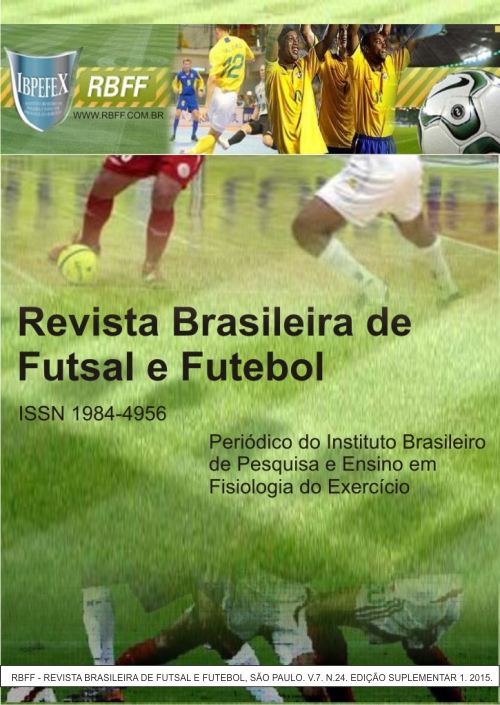Maximum oxygen consumption and games reduced in football
Abstract
Introduction: Physical training nowadays is increasingly engaging in the game itself, for this, we use reduced games to work various physical capabilities. Aim: This study evaluated whether reduced through the games in football field, there would be an increase in the body's ability to absorb and transport oxygen to the muscles. Materials and Methods: We used eight football players, youth category, they were tested for determination of the individual maximal oxygen uptake, and 6 players repeated the test, used to test application, dishes for circuit (half cone hat Chinese ), a box of brand ONER amplifier, model BLOCK 20TU a net book brand and model Azuz, bic pens, pencils faber castell, annotation sheet test and mp3 audio of the test run and also a tape of professional brand of Western 5 meters, data were collected by the team coach and the author of the research. The statistic used was descriptive. Results: It was found that there was an evolution of the first test against the second, varying only according to the players. Discussion: The results showed that with training through games, provided the players constant displacements, while increasing the degree of difficulty is increased by the stimulus that had been adapted, creating an overload that makes players able to increase their maximum capacity for oxygen utilization. Conclusion: There was an increase in both maximum oxygen consumption as the distance walked.
References
-Balikian, P.; Festuccia, W, T, L; Lourenção, A.; Neiva, C, M; Ribeiro, L. F. P. Consumo máximo de oxigênio e limiar anaeróbio de jogadores de futebol: comparação entre as diferentes posições. Revista Brasileira de Medicina e Esporte. Vol. 8. Num. 2. 2002. p. 32-36.
-Borges, T. S.; Burgos, L. T.; Moraes, G. G.; Oliveira F. B.; Reuter, E. M.; Schwanke, N. L.; Todendi, P.F. Avaliação e Desenvolvimento do VO2 de Atletas Participantes de uma Escolinha de Futebol. Cinergis. Vol. 13. Num. 1. 2012. p. 59-64.
-Denadai, B. S. Consumo Máximo de Oxigênio: Fatores Determinantes e Limitantes. Revista Brasileira de Atividade Física e Saúde. Vol. 1. Num. 1. 1995. p. 85-94.
-Marques, C. H.; Oliveira, B. N. Análise Comparativa dos Resultados Obtidos no Teste de Ergoespirometria em Jogadores de Futebol de Campo das Categorias Infantil e Juvenil da Associação Atlética Aciaria Ipatinga-MG. Movimentum. Revista Digital de Educação Física. Vol. 2. Num. 1. 2007. p. 1-11.
-Pasquarelli, B.N.; Souza, V. A. F. A.; Stanganelli, L. C. R. Os Jogos com campo reduzido no futebol. Revista Brasileira de Futebol. Vol. 3. Num. 2. 2010. p. 02-27.
Authors who publish in this journal agree to the following terms:
- Authors retain the copyright and grant the journal the right of first publication, with work simultaneously licensed under the Creative Commons Attribution License BY-NC which allows the sharing of the work with acknowledgment of the authorship of the work and initial publication in this journal.
- Authors are authorized to enter into additional contracts separately for non-exclusive distribution of the version of the work published in this journal (eg, publishing in institutional repository or book chapter), with acknowledgment of authorship and initial publication in this journal.
- Authors are allowed and encouraged to post and distribute their work online (eg, in institutional repositories or on their personal page) at any point before or during the editorial process, as this can bring about productive change as well as increase impact and impact. citation of published work (See The Effect of Free Access).





